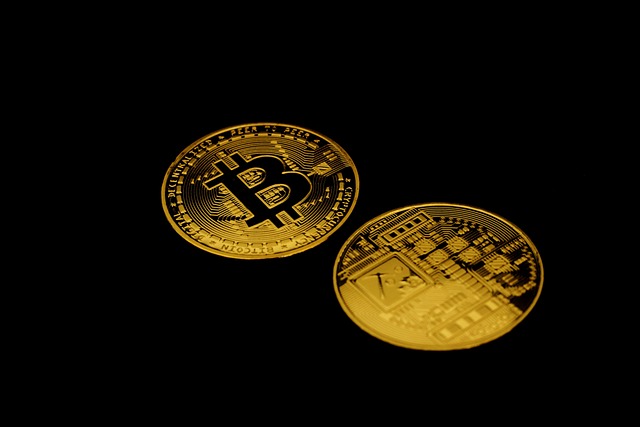Bitcoin vs Altcoin Season: Where's the Best Profit Potential?
Author: Jameson Richman Expert
Published On: 2025-08-17
Prepared by Jameson Richman and our team of experts with over a decade of experience in cryptocurrency and digital asset analysis. Learn more about us.
Understanding the fundamental differences between Bitcoin and altcoin seasons is crucial for any serious crypto investor aiming to maximize profit opportunities. Over my extensive years in the cryptocurrency arena, I’ve observed that these distinct phases not only influence market dynamics but also profoundly impact trading strategies, risk management, and portfolio diversification. Successfully navigating these periods requires a nuanced understanding of market sentiment, historical patterns, technological advancements, macroeconomic factors, and behavioral psychology. Recognizing when Bitcoin leads the market versus when altcoins outperform can mean the difference between substantial gains and missed opportunities. This comprehensive analysis explores the intricacies of these market cycles, delves into detailed historical patterns, evaluates technological and macroeconomic drivers, and shares practical, data-backed strategies to help you identify and capitalize on the most lucrative periods.

Understanding Bitcoin and Altcoin Seasons
To effectively navigate crypto markets, one must first establish a clear understanding of what constitutes Bitcoin and altcoin seasons, how they differ in market behavior, investor psychology, and their underlying drivers. Recognizing the signs and triggers of each phase allows traders and investors to optimize timing and strategy for better returns.
What is a Bitcoin Season?
Bitcoin season typically occurs when Bitcoin’s dominance—the ratio of Bitcoin’s market capitalization to the total crypto market cap—increases significantly, often surpassing 60-70%. During these periods, investors tend to view Bitcoin as a safer, more established store of value or a hedge against macroeconomic uncertainty. Bitcoin’s recognition as the original blockchain asset, coupled with its high liquidity and growing institutional acceptance, cements its role as a "digital gold." This phase is characterized by steady appreciation, high liquidity, and relatively lower volatility compared to altcoins, which tend to experience more dramatic swings during altcoin seasons.
- Market Characteristics: Steady, sustained growth with less dramatic swings; high liquidity facilitates large trades without slippage.
- Investor Behavior: Risk-averse investors, institutions, and long-term holders seek safety and preservation of capital, often increasing their Bitcoin holdings.
- Typical Drivers: Macro trends such as inflation fears, fiat currency devaluations, geopolitical tensions, and institutional adoption trends reinforce Bitcoin’s safe-haven appeal. Regulatory clarity and mainstream acceptance also contribute to its dominance.
What is an Altcoin Season?
Altcoin season emerges when alternative cryptocurrencies outperform Bitcoin, often sharply and rapidly. These periods are driven by sector-specific developments, technological upgrades, or speculative market behavior. During altcoin seasons, smaller projects—particularly those in DeFi, NFTs, Layer 2 solutions, and emerging sectors—experience explosive gains, sometimes multiples of their previous value within weeks or months. Altcoins attract risk-tolerant traders, fueled by momentum trading, social hype, and FOMO (Fear of Missing Out). This phase is characterized by elevated volatility, surging trading volumes, and sector-specific news or technological breakthroughs that intensify investor enthusiasm.
- Market Characteristics: Rapid price swings, high volatility, sector-wide rallies, and increased trading activity—often with meme coins and low-cap gems leading the charge.
- Investor Behavior: Risk-on attitude, speculative trading, momentum chasing, and community-driven hype dominate trading psychology during this phase.
- Typical Drivers: Major technological upgrades (such as Ethereum upgrades or new Layer 1 chains), sector-specific news (like NFT boom), macroeconomic shifts, and retail investor enthusiasm contribute heavily to altcoin outperformance.
Market psychology during these phases shifts from risk aversion (Bitcoin season) to risk-taking (altcoin season). Recognizing behavioral cues—such as surging social media chatter, rising developer activity, prominent endorsements, and news catalysts—can help traders time their entries and exits effectively to maximize returns while managing downside risk.
Historical Perspective and Market Cycles
Analyzing historical data from sources like CoinMarketCap, CoinDesk, Glassnode, and Santiment reveals consistent patterns in crypto market cycles. These insights help us understand the timing, magnitude, and triggers behind Bitcoin and altcoin seasons:
- Post-Correction Recovery: After market corrections or bear markets, Bitcoin often leads the recovery, rallying first and setting bullish sentiment. For example, after the 2018 bear market, Bitcoin’s slow but steady recovery laid the groundwork for subsequent altcoin surges as investor confidence built.
- Major Bull Runs: The 2020–2021 bull cycle saw Bitcoin surpass $60,000, but explosive gains in altcoins like Solana (SOL) and Avalanche (AVAX) exceeded 10,000%, illustrating the pattern where Bitcoin’s steady rally creates investor confidence, followed by sector-specific altcoin booms.
- Timing of Altcoin Seasons: Historically, altcoin rallies tend to follow Bitcoin peaks by approximately 3-6 months. These surges are often triggered by technological upgrades, new sector adoption (NFTs, DeFi), or macroeconomic factors that increase risk appetite.
In addition to price action, macroeconomic factors such as inflation concerns, currency devaluations, and increasing institutional capital inflows act as catalysts. For instance, the influx of institutional investors in 2020-2021 bolstered Bitcoin’s bullish trend and subsequently fueled altcoin rallies, as investors sought higher returns in riskier sectors during a broadly risk-on environment.
Technological and Macro Drivers of Cycles
Understanding what ignites these cycles helps traders anticipate upcoming phases and refine entry/exit points:
- Technological Upgrades: Major protocol upgrades—like Ethereum 2.0, Solana’s network enhancements, or Cardano’s development milestones—often generate sector excitement, attracting speculation and investment in related tokens.
- Regulatory Environment: Clear, favorable regulations tend to boost investor confidence, leading to altcoin surges; conversely, negative or uncertain regulatory news can deepen Bitcoin’s safe-haven status and suppress altcoin activity temporarily.
- Institutional Adoption: Large-scale investments, institutional endorsements, or crypto integrations into traditional finance boost overall market confidence, initially favoring Bitcoin but eventually spilling over into altcoins that offer higher upside potential.
- Macroeconomic Conditions: Inflationary pressures, geopolitical tensions, and economic crises tend to drive investors toward Bitcoin as a hedge, while periods of macroeconomic stability foster risk appetite for altcoins with higher growth potential.

Strategies to Maximize Profit During Bitcoin and Altcoin Seasons
My approach combines technical analysis, fundamental research, diversification, and disciplined execution. Here’s an in-depth guide:
During Bitcoin Season
- Accumulation: Use dollar-cost averaging (DCA) to systematically build a Bitcoin position, reducing timing risk and smoothing entry points during consolidation phases or dips.
- Portfolio Diversification: Maintain a core holding in Bitcoin while diversifying into high-quality altcoins with promising fundamentals, sector relevance, or technological potential to capitalize on future altcoin seasons.
- Monitoring Indicators: Track Bitcoin dominance, on-chain metrics such as NVT ratios, whale wallet activity, and macroeconomic data. For example, rising whale activity may signal accumulation or distribution phases, while shifts in dominance can indicate a potential transition into altcoin season.
Entering Altcoin Season
- Technical Breakouts: Look for bullish breakouts above resistance levels, volume spikes, bullish divergence in RSI, MACD, or other momentum indicators. Confirm signals with on-chain data such as increasing active addresses or transaction volumes.
- On-Chain Metrics: Analyze activity metrics like transaction volume, active wallets, and large wallet movements to gauge sector interest. Rising developer activity on GitHub or social engagement can also signal upcoming sector surges.
- Community and Sentiment Analysis: Engage with social media trends, news, and developer updates. A surge in positive sentiment often precedes price rallies, especially when supported by technological milestones or sector adoption.
Leverage trusted resources and trading platforms such as:
Risk Management and Timing
Effective risk management is paramount in the volatile crypto environment. Based on extensive experience, I recommend:
- Stop-Loss Orders: Place tight stop-losses to protect against sharp reversals, especially during altcoin rallies where prices can reverse rapidly due to high volatility.
- Position Sizing: Use a disciplined approach—never allocate more than a fixed percentage of your portfolio to any single asset or sector, and diversify to mitigate systemic risks.
- On-Chain & Technical Indicators: Combine on-chain data like whale activity, miner behavior, and transaction metrics with technical tools such as RSI, MACD, Bollinger Bands, and Fibonacci levels for precise timing.
- Market Sentiment & News: Stay updated on news, regulatory developments, and social sentiment. Advanced tools like sentiment analysis and news alerts can give early signals of upcoming shifts.
Final Thoughts: Which Season Offers Better Profit Potential?
Both Bitcoin and altcoin seasons offer compelling opportunities, but with differing risk-reward profiles:
- Bitcoin Season: Generally safer, providing steady appreciation, high liquidity, and lower volatility. Ideal for conservative investors, long-term holders, or those seeking a hedge against macroeconomic uncertainty.
- Altcoin Season: Presents higher upside potential—sometimes exceeding 1000% gains in weeks—though with increased volatility and risk. Best suited for experienced traders who actively monitor markets and can react swiftly to technical signals and news developments.
My extensive experience underscores that success in crypto investing hinges on patience, continuous learning, disciplined risk management, and adaptability. Recognizing key triggers—such as surges in trading volume, bullish divergences, social sentiment shifts, and technological milestones—can significantly enhance timing precision. Staying informed about technological upgrades, macroeconomic shifts, and regulatory developments is essential for capitalizing efficiently on these cycles.
In conclusion, both Bitcoin and altcoin seasons can be highly profitable if approached strategically. Building a resilient, well-researched plan, leveraging advanced analytics, and engaging with community insights will serve you well. Remember, timing, information, and disciplined execution are your most valuable assets in this fast-evolving landscape. Stay vigilant, keep learning, and happy trading!